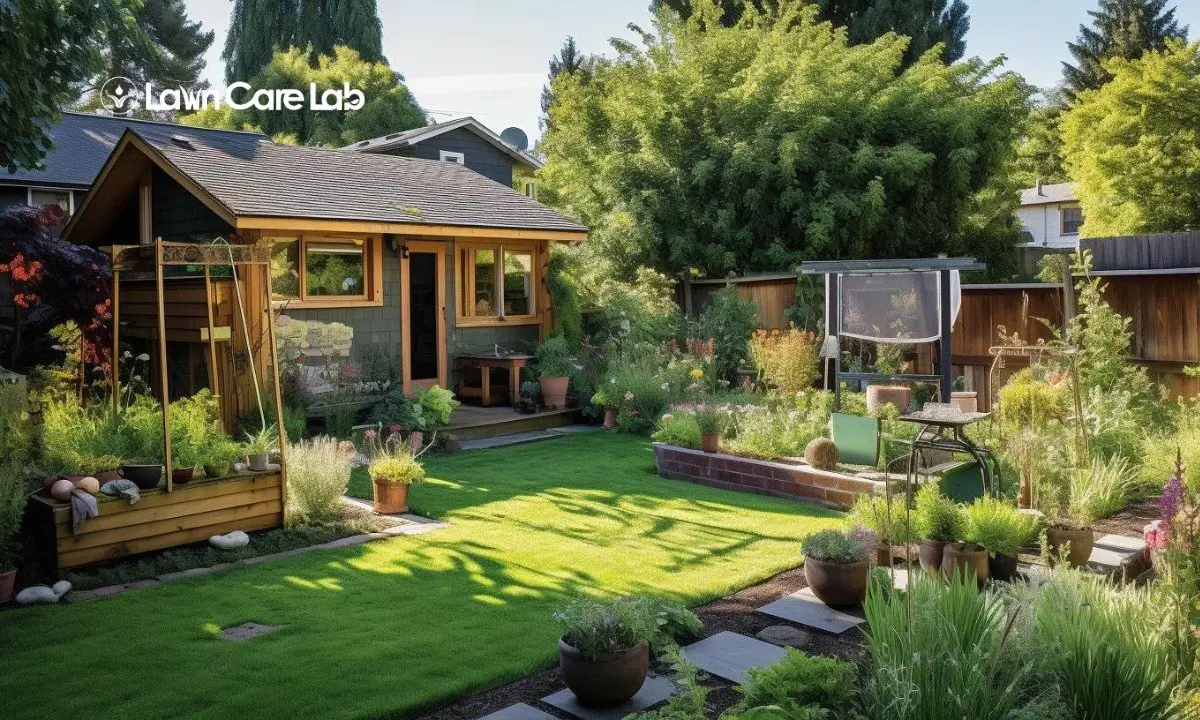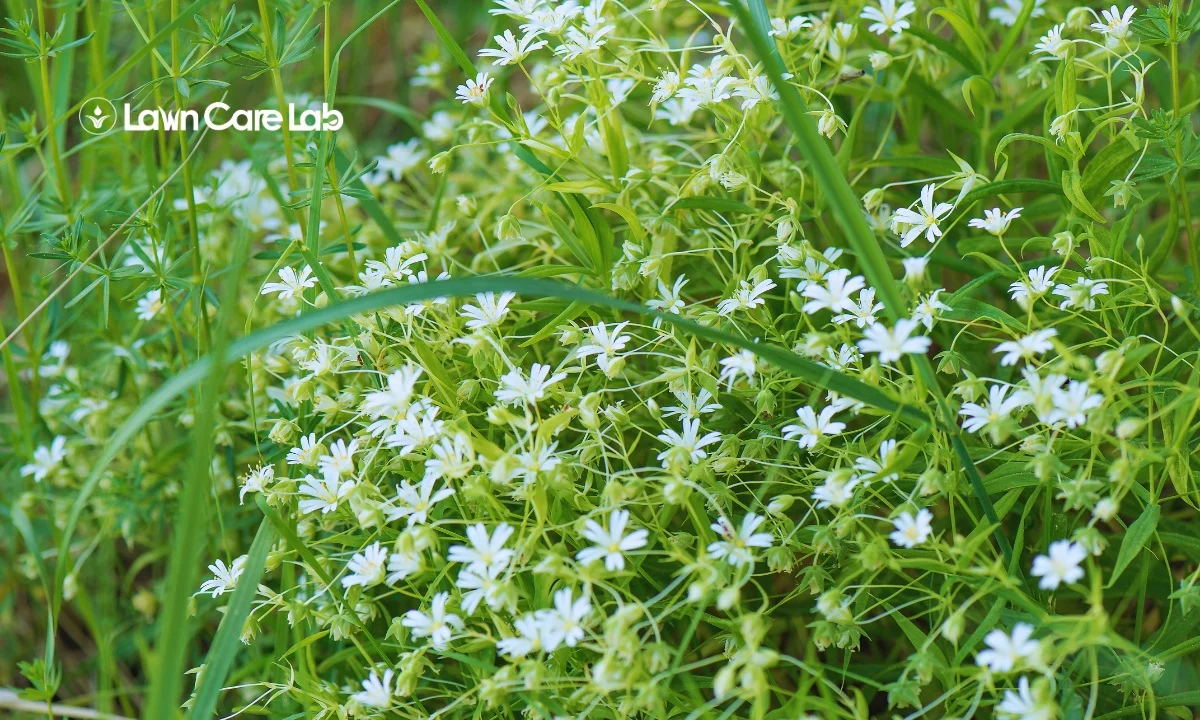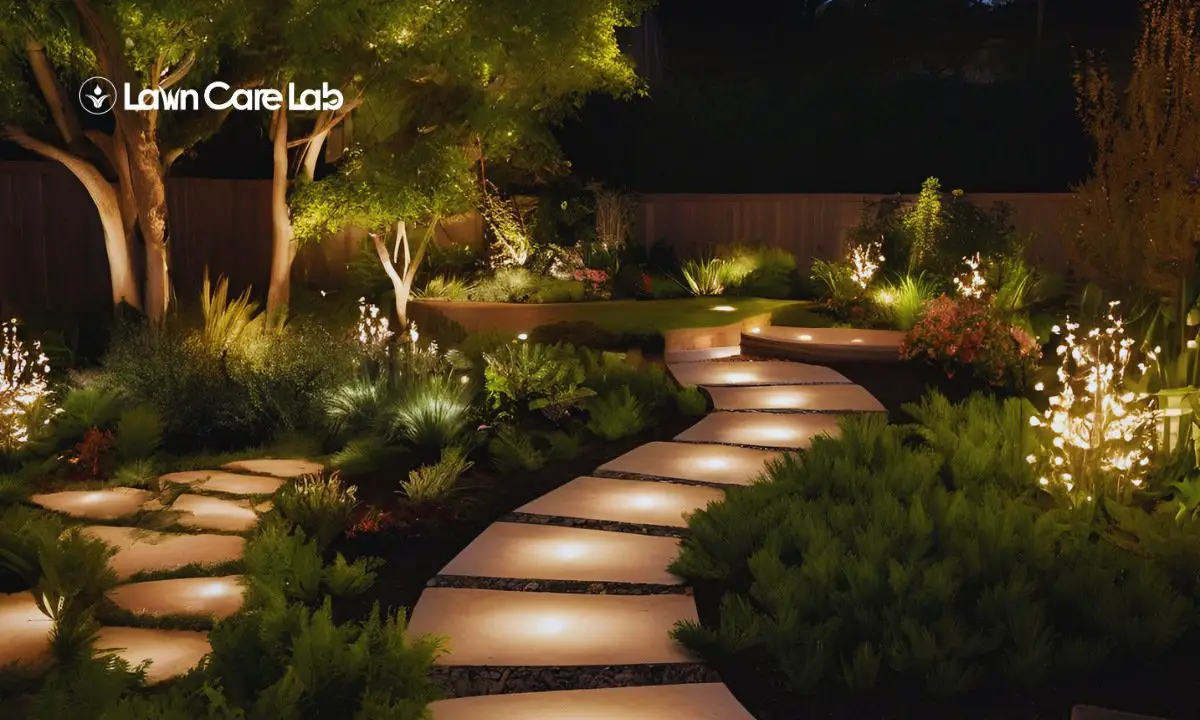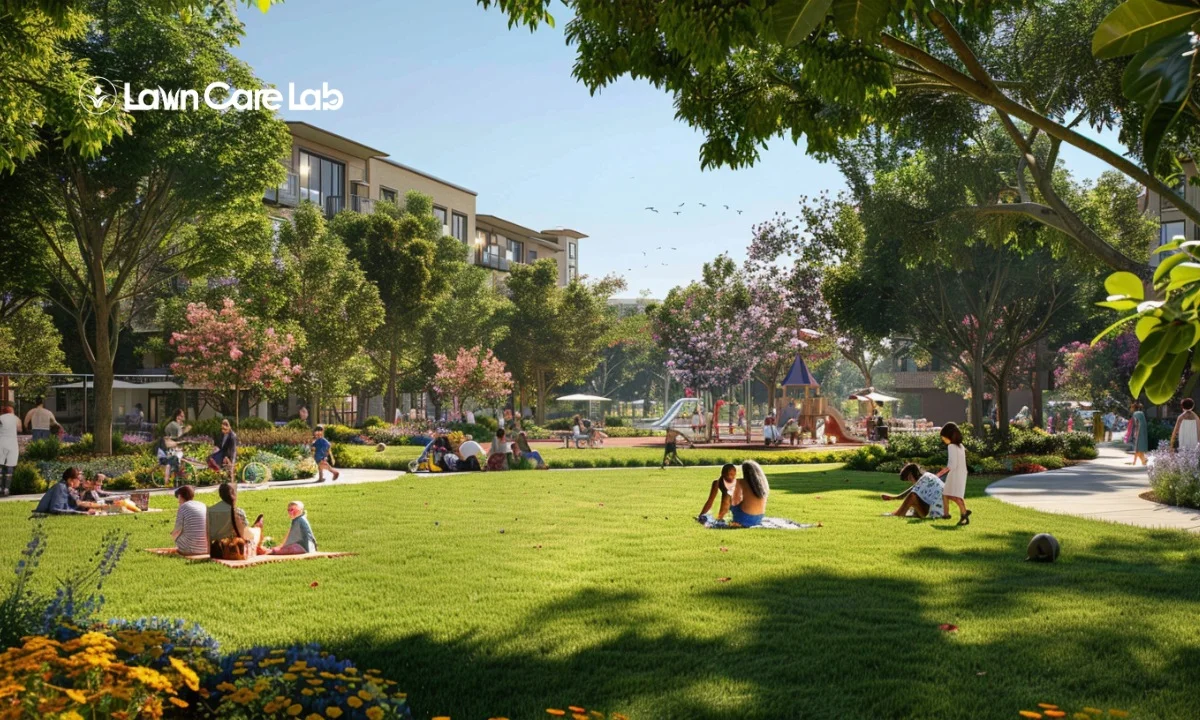Want to green up your outdoor space in simple, budget-friendly ways? Scaling down your grassy areas can work wonders for both sustainability and aesthetics. Learn how shrinking your lawn conserves resources, boosts biodiversity, and opens opportunities to incorporate beautiful native plants and gardens.
Small steps make a meaningful difference – let’s explore practical tips to transform your backyard into a thriving eco-haven, starting with reducing lawn size.
Table of Contents
The Eco-Friendly Move Towards Smaller Lawns
The trend towards eco-friendly outdoor spaces is pushing for smaller, more sustainable lawns. This approach reduces water consumption and chemical use while also allowing for a personalized outdoor space.
The Environmental Impact of Large Lawns
Your expansive green lawn, while visually appealing, could be having a negative impact on the environment.
It’s no longer just a matter of curb appeal; the repercussions extend to high water usage, harmful effects of chemical fertilizers, and a decrease in local biodiversity.
Making a transition to smaller, environmentally friendly lawns has moved from a mere trend to a vital step in preserving our ecosystem.
Water Consumption in Lawn Maintenance
Making a choice to minimize your lawn size can have a substantial effect on water use, marking it as a green choice for your household.
| Expansive Lawns | Compact Lawns | |
|---|---|---|
| 1. | Increased Water Use | Decreased Water Use |
| 2. | Drains Resources | Saves Resources |
| 3. | Contributes to Pollution | Diminishes Pollution |
This decision not only conserves resources but also reduces pollution.
Next, we’ll examine how chemical fertilizers affect soil health.
Effects of Chemical Fertilizers on Soil Health
As we continue our discussion, we turn our attention to the negative effects of chemical fertilizers on the health of our soil. This is an aspect often neglected when people strive for large, vibrant green lawns.
The use of these harsh chemicals can lead to soil degradation, reducing its capacity to hold water and essential nutrients. Alongside this, these chemicals can also destroy helpful microorganisms in the soil. This is a significant cost for achieving a green lawn.
Benefits of Reducing Lawn Size

A smaller lawn has many benefits. It conserves water and reduces chemical use, leading to a cleaner environment. It’s also a practical step that lowers maintenance costs.
It promotes local biodiversity, creating a small sanctuary for flora and fauna in your backyard. A win-win situation!
Lower Maintenance and Care Expenses
Reducing lawn size means less maintenance, water usage, and tools needed. This not only saves you money but also promotes sustainable living.
As our society continues to emphasize environmental consciousness, this is one simple and effective way you can contribute.
Decreased Water Bills
Shrinking your lawn area can directly impact your water expenditure, as a less grassy surface requires less watering and maintenance.
Using less water saves money and helps preserve water resources.
By taking this simple yet effective eco-conscious action, you’re not just pocketing savings but also contributing to the conservation of our planet’s resources.
Reduced Use of Lawn Equipment
One of the many benefits of having a smaller lawn is financial savings. A smaller lawn requires fewer gardening tools, which translates into less money spent on maintenance and care.
| Equipment | Cost for Large Lawn | Cost for Small Lawn |
|---|---|---|
| Mower | High | Low |
| Trimmer | High | Low |
| Sprinkler | High | Low |
A smaller lawn can make your home safer, more budget-friendly, and positively impact the environment. Let’s talk about how this simple change can contribute to a healthy planet.
Positive Environmental Implications
Reducing lawn size of your grass-covered area can make a significant positive impact on our environment.
For one, it can help you limit the use of chemicals that often end up contaminating our water bodies – a move that’s beneficial for every living being.
Planting various plants can attract local animals and insects, promoting biodiversity in your garden.
Reduced Chemical Runoff
Limiting your lawn size reduces chemical runoff by lessening the use of pesticides and fertilizers. This simple step can lead to notable improvements.
- Limiting water contamination: Fewer chemicals end up in your local water sources.
- Increasing safety measures: You and the local wildlife are less likely to be exposed to harmful chemicals.
Creating a sustainable backyard isn’t just trendy, it’s a responsible choice for the environment.
Enhanced Biodiversity
Choosing to plant local flora by reducing the size of your lawn can boost regional biodiversity and create habitats for wildlife. It’s a small adjustment that can make your outdoor space safer and more in tune with the environment.
Practical Steps to Reduce Your Lawn Size
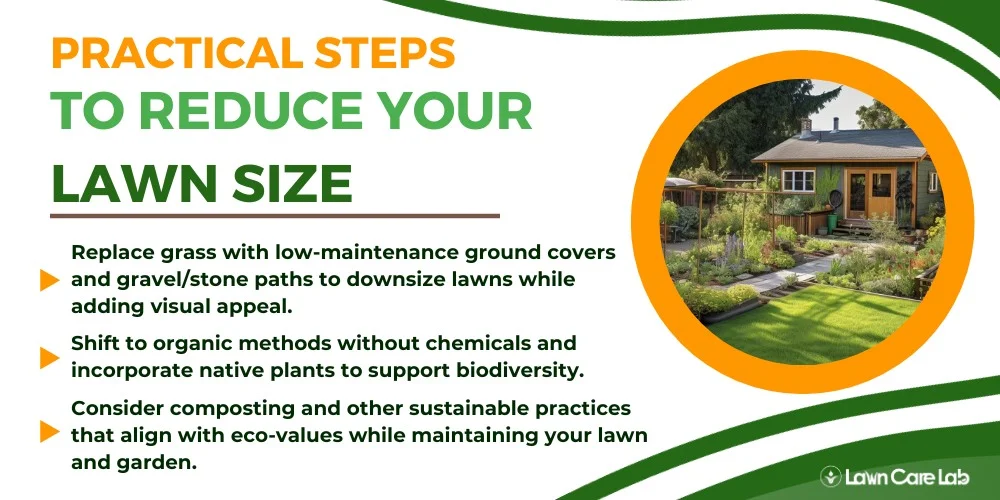
Deciding to reduce your lawn size and create a more eco-friendly landscape is commendable. Let’s walk through simple steps to redesign your outdoor space so that it remains visually appealing even with a smaller lawn.
Then, we can consider incorporating some environmentally friendly gardening practices. These can help maintain your green space while also contributing to a greener planet.
Creating a visually appealing and practical outdoor space is not just about saving water and reducing maintenance work. With efficient landscape design techniques, you can enjoy the same level of satisfaction with a smaller lawn area.
In addition, Eco-friendly gardening practices, like composting, using native plants, and reducing pesticide use, help maintain your garden and promote a healthier ecosystem.
Implementing Landscape Design Techniques
Create an eco-friendly green space with intelligent landscape design. Reduce grassy areas with ground cover plants and add color. Build garden paths to minimize lawn area and increase appeal.
Effective landscape design is about creating a beautiful and sustainable space.
Using Ground Cover Plants and Creating Garden Paths
To create a greener outdoor space, replace sections of your lawn with low-maintenance ground cover plants and build walkways using durable materials like gravel, stone, or wood.
Implementing these measures not only boosts your garden’s visual appeal but also cuts down on water consumption and upkeep.
Environmentally conscious gardening involves replacing lawns with ground-cover plants, using resilient materials for paths, and creating an inviting outdoor space while conserving water and reducing maintenance.
Incorporating Eco-Friendly Gardening Practices
A significant change you can make is to shift to organic gardening methods. This way, your garden will be free from harmful chemicals.
Also, planting native flora is a great idea. It not only lends a unique look to your garden but also supports local biodiversity and can help conserve water.
As the famous environmentalist Rachel Carson once said, ‘In nature, nothing exists alone.’ So, by choosing organic gardening and native plants, you’re contributing to a healthier ecosystem right in your backyard.
Organic Gardening
Creating a small organic garden in your yard promotes natural gardening practices and an eco-friendly outdoor space.
Here’s how:
- Choose Environment-friendly substitutes: Ditch artificial fertilizers. Steer clear of harmful chemicals.
- Nurture a robust ecosystem: Improve the soil quality and Encourage local biodiversity.
Growing native plants is a sustainable choice that increases biodiversity, enriches the soil, and attracts local wildlife. It also requires less water and care, making it a practical and responsible choice in the era of climate change and environmental degradation.
As a gardener, you become a steward of the environment, making choices that support the natural world and promote safety and vitality in your garden.
Native Plant Gardening
Establishing gardens with native plants in our backyards is a simple way to make a low-maintenance and resource-friendly impact on the environment.
Plus, consider replacing your lawn with native plants to support local biodiversity and provide a sanctuary for wildlife.
Embrace the Eco-Friendly Landscape
Adopting a green landscape design is more than just about visual appeal, it plays a vital role in boosting your community’s sustainability efforts. By shrinking your lawn, you’re not just crafting an attractive and modern green space, you’re also championing environmental wellness.
Let’s look at the various advantages an eco-friendly landscape offers:
Resource Conservation:
- Water Savings: Smaller lawns need less watering, which helps conserve this precious resource.
- Reduced Chemical Dependency: A smaller lawn means less need for potentially harmful pesticides and fertilizers.
Biodiversity Boost:
- Creating Habitats: Planting native species draws in local wildlife, supporting a balanced ecosystem.
- Healthier Soil: Diverse plantings contribute to nutrient-rich and resilient soil.
Taking this path means crafting a safe, sustainable sanctuary in your backyard.
As the famous environmentalist John Muir once said, ‘When one tugs at a single thing in nature, he finds it attached to the rest of the world.’ So, let’s make our landscapes beautiful and a positive force for our environment.
- How to Create a Lawn Care Schedule for Southern Climates - October 30, 2024
- How to Use Compost Tea to Boost Lawn Growth and Soil Health - October 23, 2024
- The Best Grasses for Saltwater-Exposed Lawns: Coastal Lawn Care - October 17, 2024

